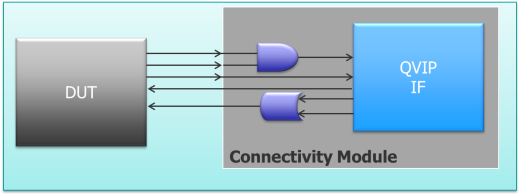No to Know VIP
In a recent post on deepchip.com John Cooley wrote about “Who Knew VIP?”. In addition, Mark Olen wrote about this same topic on the verification horizon’s blog. So are VIPs becoming more and more popular? Yes!
Here are the big reasons why I believe we are seeing this trend:
- Ease of Integration
- Ready made Configurations and Sequences
- Debug Capabilities
I will be digging deeper on each of these reasons and topics in a three part series on the Verification Horizons BLOG. Today, in part 1 our focus is Easy Integration or EZ VIP.
While developing VIP’s there are various trade off that one has to consider – ease of use vs amount of configuration, protocol specific vs commonality across various protocols. A couple of years ago; when I first got my hands on Mentor’s VIP, there were some features that I really liked and some that I wasn’t familiar with and some that I needed to learn. Over the last couple of years, there have been strides of improvements with ease of use (EZ-VIP) a big one in that list.
EZ-VIP’s is aimed to make it easier to:
- Make connections between QVIP interfaces and DUT signals
- Integrate and configure a QVIP in a UVM testbench
This makes it easier for customers to become productive in hours rather than days.
Connectivity Modules:
Earlier we gave the users the flexibility on the direction of the ports of VIP based on the use modes. The user needed to write certain glue logic apart from setting the directions of the ports.
Now we have created new connectivity modules. These connectivity modules enable easy connectivity during integration. These connectivity modules are wrapper around the VIP interface with the needed glue logic, ports having protocol standard names and with the right direction based on the mode e.g. Master, Slave, EP, RC etc. These now enables the user to quickly integrate the QVIP with the DUT.
Quick Starter Kits:
These kits are specific to PCIe and are customized pre-packaged for all major IP vendors, easy-to-use verification environments for the serial and parallel interfaces of PCIe 1.0, 2.0, 3.0, 4.0 and mPCIe, which can be used to verify PHY, Root Complex and Endpoint designs. Users also get example which could be used as reference. These have dramatically reduced bring up time for PCIe QVIP with these IPs to less than a day.
In the part 2 of this series, I will talk about QVIP Configuration and Sequences. Stay tuned and I look forward to hearing your feedback on the series of posts on VIP.





A lot of DV bring-up effort/time the old school way is spent in hand-crafting the environment & connections. Time is spent in debugging trivial connectivity/port-direction issue. Automation and not just boiler-plate templates/scripts certainly go the distance in helping DV focus instead on making the DUT alive (and proceeding with verification).
Looking forward to reading on about the productivity enhancements in various aspects of the environment setup,